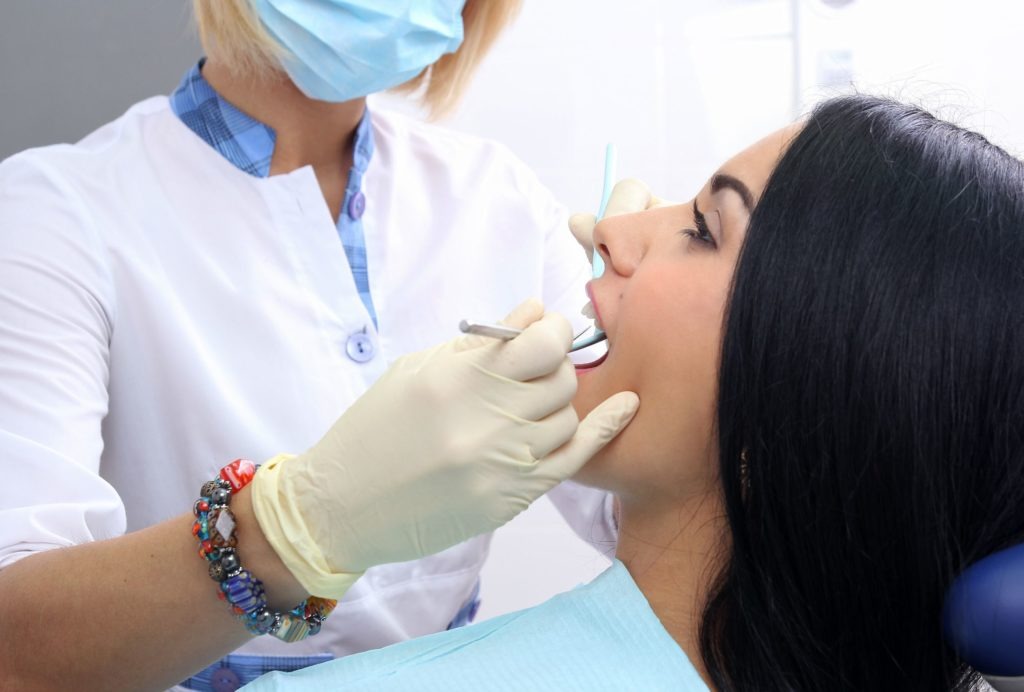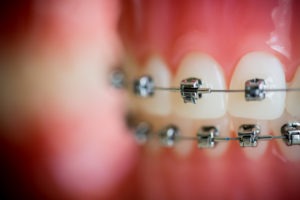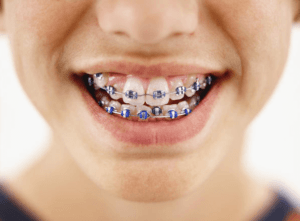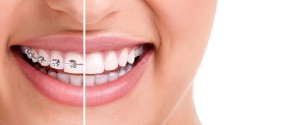Are you anxiously awaiting your appointment to be fitted for braces? Or are you crossing the last few days off the calendar before they come off? Whether you’re at the very beginning of your braces journey, nearing the end of it, or somewhere in the middle, knowing what to do when minor issues pop up can make it a much smoother process for you. Equally important is knowing how to handle any true orthodontic emergencies that may occur, although they are rare. Here at Szymanowski Orthodontics, we want our patients to be well-informed and well-prepared, so let’s take a closer look at what we mean when we talk about orthodontic emergencies.
True orthodontic emergencies
We encourage you to seek help as soon as possible if you find yourself experiencing any of the following symptoms at any point in your orthodontic treatment:
- any serious injury or trauma to the face, neck, mouth, teeth, gums, etc
- any swelling, infection, or bleeding of the gums or mouth
- any severe pain or discomfort in your teeth, mouth, face, or neck
 We generally recommend you start with your orthodontist’s office, but if you feel as though the emergency room would be a better option for you, don’t hesitate to go. Don’t worry that this will impede your treatment time or its overall effectiveness. We can always adjust things when, or if, needed once the emergency situation has been taken care of.
We generally recommend you start with your orthodontist’s office, but if you feel as though the emergency room would be a better option for you, don’t hesitate to go. Don’t worry that this will impede your treatment time or its overall effectiveness. We can always adjust things when, or if, needed once the emergency situation has been taken care of.
Sometimes it can be confusing trying to decide when a situation is ER-worthy or one where it’s safe to take a wait-and-see approach. A good example of a problem requiring immediate diagnosis and treatment would be something like a fractured tooth, or any severe pain or swelling, which can be a sign of infection and disease. These kinds of emergencies are few and far between, however, and much more often, you will experience a range of minor orthodontic “emergencies.” Many of these can even be remedied at home!
Minor orthodontic emergencies
These are some of the more common minor orthodontic “emergencies” you may experience at some point during your orthodontic treatment, and what you can do about them without stepping outside your door.
Mouth sores
Braces themselves don’t actually cause mouth sores, but some patients seem to be more susceptible to getting them during treatment. These ulcers usually appear inside the cheeks and lips, or on the tongue or gums, and can be very uncomfortable. Irritation from braces can also exacerbate them. For instant relief, try applying a small amount of topical anesthetic directly to the ulcer, using a cotton swab. You can reapply this as needed.
Loose or broken brackets, bands, or wires
If any part of your braces come loose or break off, contact your orthodontist first to determine what your next steps should be. While waiting for your next appointment, there are a few guidelines you can follow to keep both your braces and your mouth safe.
 If you have a band or bracket that’s broken, but still attached to the wire, don’t connect any elastics to it, and leave it alone until your appointment. If it’s irritating the inside of your mouth, you can cover it with orthodontic wax. If the broken piece has actually come off, put it in a bag and save it for your orthodontist.
If you have a band or bracket that’s broken, but still attached to the wire, don’t connect any elastics to it, and leave it alone until your appointment. If it’s irritating the inside of your mouth, you can cover it with orthodontic wax. If the broken piece has actually come off, put it in a bag and save it for your orthodontist.
Misplaced archwire, bracket, or tie
As your teeth begin adjusting to treatment, they’ll start to move. When this happens, the archwire that connects them may also move, poking out a bit near the back of the mouth and irritating your cheeks. This wire can often be moved into a better position by using the eraser end of the pencil or a cotton swab. Any misplaced wires or ties can usually be manipulated back into place by gently using a pair of clean tweezers.
If some of the wires or brackets have shifted and are causing irritation to your mouth, you can use orthodontic wax to cover the parts that are poking out. This will help ease the discomfort, but make sure you get in touch with your orthodontist as soon as you can, so the problem itself can be fixed, instead of you only masking the symptoms at home.
Tooth pain or loose teeth
Teeth become slightly loosened during orthodontic treatment, which is actually proof of them doing exactly what we want them to. It can be a little disconcerting at first, but it’s nothing to worry about. This movement may sometimes be accompanied by tenderness, especially after your braces are placed or have just been adjusted.
Using a salt water rinse twice a day is a tried and true remedy that can be really helpful. Just mix one teaspoon of salt in 8 ounces of warm water, then swish it around your mouth for about 30 seconds. A warm washcloth or a heating pad placed on the outside of your jaw can offer some relief as well.
Although home remedies can be extremely helpful, they may not always work or completely remove the source of pain, discomfort, and irritation. But they can often help resolve minor issues, and lessen or relieve symptoms until you can be seen at your orthodontist’s office.
Szymanowski Orthodontics is here to help in Sacramento
While it’s true that actual orthodontic emergencies are rare, if they do happen, it’s important to seek treatment as soon as possible. We do understand that even minor emergency situations can be upsetting, too, though!
Our team at Szymanowski Orthodontics is made up of a group of knowledgeable, caring, and committed professionals who are here to help make your orthodontic experience as personal and pain-free as possible. If a problem pops up with your braces, we’ll do our best to get you in and out as quickly as we can.
If you’re in the Sacramento or surrounding area and are experiencing any discomfort with your braces, get in touch with us and let us get to the bottom of it. The process of creating a bright and beautiful smile doesn’t have to hurt! We’ll do whatever we can to correct the problem, and have you showing your smile off again in no time.
 The answer is actually very simple: we get older.
The answer is actually very simple: we get older.
 It’s no surprise that dentists and orthodontists both go to dental school, but what you may not know is that orthodontists have a more difficult path. Dentists that want to specialize in orthodontics have to go into a specialized training program for an extra two or three years following dental school. Once dentists have completed dental school, only the best of those students in the class can go on to this particular training for a specialty in orthodontics. Acceptance into orthodontic programs is very competitive! Once they get accepted, they have to go through two to three years of extra training in orthodontia, which includes braces, bites and bite problems, jaws, and straightening teeth. Some dentists decide to go through this rigorous training, but most do not. A dentist can refer to themselves as an orthodontist only after they have successfully finished this program. So essentially, all orthodontists are dentists, but not all dentists are orthodontists.
It’s no surprise that dentists and orthodontists both go to dental school, but what you may not know is that orthodontists have a more difficult path. Dentists that want to specialize in orthodontics have to go into a specialized training program for an extra two or three years following dental school. Once dentists have completed dental school, only the best of those students in the class can go on to this particular training for a specialty in orthodontics. Acceptance into orthodontic programs is very competitive! Once they get accepted, they have to go through two to three years of extra training in orthodontia, which includes braces, bites and bite problems, jaws, and straightening teeth. Some dentists decide to go through this rigorous training, but most do not. A dentist can refer to themselves as an orthodontist only after they have successfully finished this program. So essentially, all orthodontists are dentists, but not all dentists are orthodontists. It’s not uncommon for people to go to go to their general dentist to receive orthodontic care if they offer it. But you might want to consider these questions before you decide to go right for it:
It’s not uncommon for people to go to go to their general dentist to receive orthodontic care if they offer it. But you might want to consider these questions before you decide to go right for it: Braces can be employed to solve multiple orthodontic problems. One of the most common is gapped or crowded teeth. The brackets and wires gently guide your teeth into alignment over time, ending in a healthy, aesthetically pleasing finished product. They can also be used to fix malocclusions (bad bites). Both of these problems can lead to poor dental hygiene, tooth wear, gum damage, and jaw joint problems if left untreated. The avoidance of these scenarios is one reason why braces are so important.
Braces can be employed to solve multiple orthodontic problems. One of the most common is gapped or crowded teeth. The brackets and wires gently guide your teeth into alignment over time, ending in a healthy, aesthetically pleasing finished product. They can also be used to fix malocclusions (bad bites). Both of these problems can lead to poor dental hygiene, tooth wear, gum damage, and jaw joint problems if left untreated. The avoidance of these scenarios is one reason why braces are so important. atives like Invisalign are available for those who are looking for something more discreet. Adult orthodontics have to be approached differently than adolescent orthodontics, as the mouth has developed into a very different landscape. Orthodontists consider many factors when it comes to providing effective treatment, and age is certainly an important one.
atives like Invisalign are available for those who are looking for something more discreet. Adult orthodontics have to be approached differently than adolescent orthodontics, as the mouth has developed into a very different landscape. Orthodontists consider many factors when it comes to providing effective treatment, and age is certainly an important one. When talking about braces, people often mention the foods you can’t eat while wearing them. While it’s true that there are foods you should avoid, this list is smaller than you might think. At Szymanowski Ortho, we give patients a comprehensive list of foods to avoid, so there’s no guessing down the road. This list includes popcorn, ice, peanuts, gum, caramel, etc.
When talking about braces, people often mention the foods you can’t eat while wearing them. While it’s true that there are foods you should avoid, this list is smaller than you might think. At Szymanowski Ortho, we give patients a comprehensive list of foods to avoid, so there’s no guessing down the road. This list includes popcorn, ice, peanuts, gum, caramel, etc.




 Turn on your TV or open up just about any glossy magazine, and you could be forgiven for thinking that we live in a world where everyone possesses a perfectly straight, perfectly bright smile. Luckily, the truth shows us something quite different!
Turn on your TV or open up just about any glossy magazine, and you could be forgiven for thinking that we live in a world where everyone possesses a perfectly straight, perfectly bright smile. Luckily, the truth shows us something quite different!

 What’s the difference between popular choices like metal
What’s the difference between popular choices like metal  Because they’re removable, you take them out before eating or drinking anything other than water, so you don’t have any issues with food getting stuck in between brackets and wires. You also remove them before brushing and flossing, giving you easier access to your teeth. There’s an Invisalign Cleaning system, or you can simply brush and rinse your trays in lukewarm water to keep them clean.
Because they’re removable, you take them out before eating or drinking anything other than water, so you don’t have any issues with food getting stuck in between brackets and wires. You also remove them before brushing and flossing, giving you easier access to your teeth. There’s an Invisalign Cleaning system, or you can simply brush and rinse your trays in lukewarm water to keep them clean.